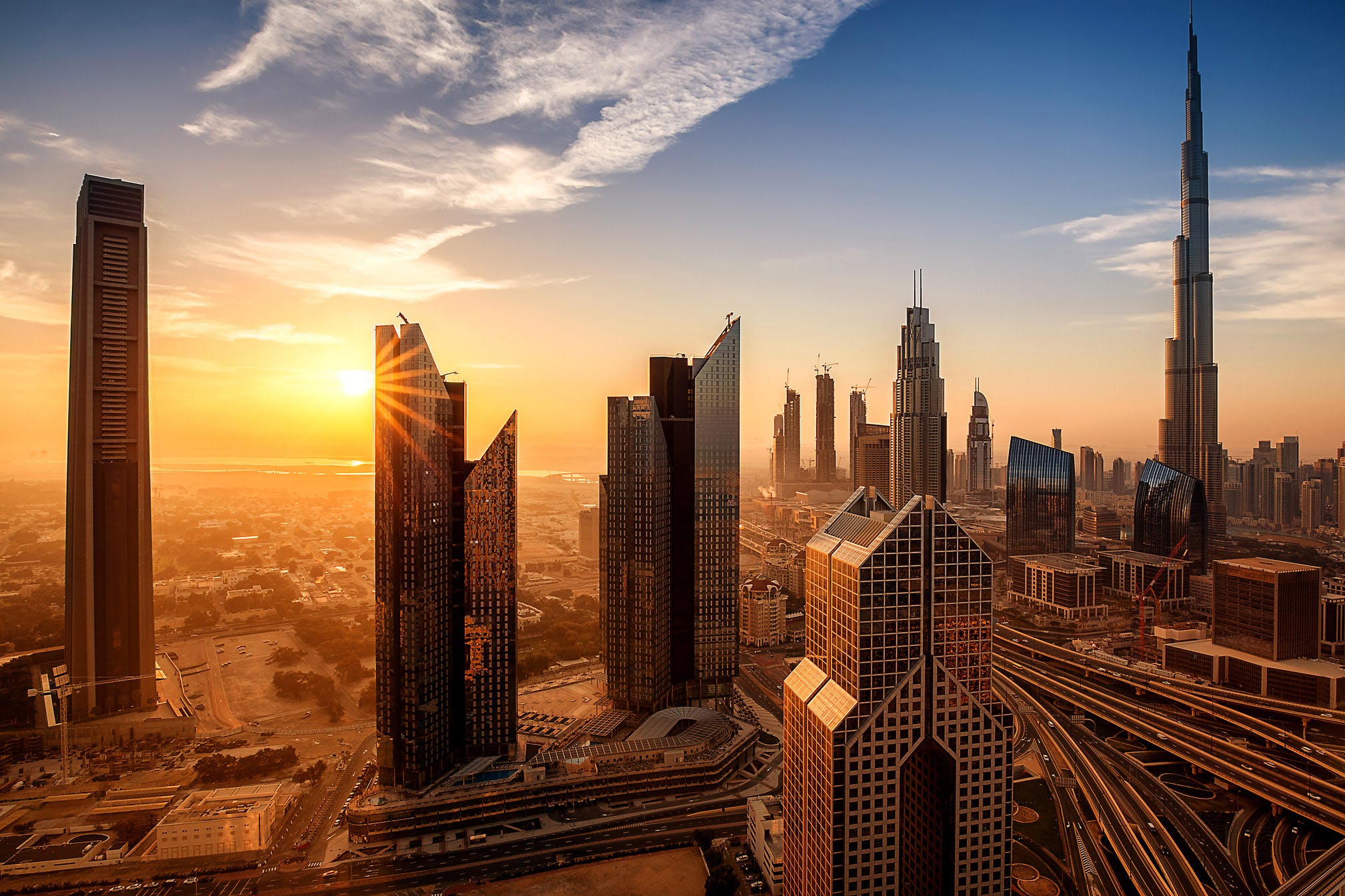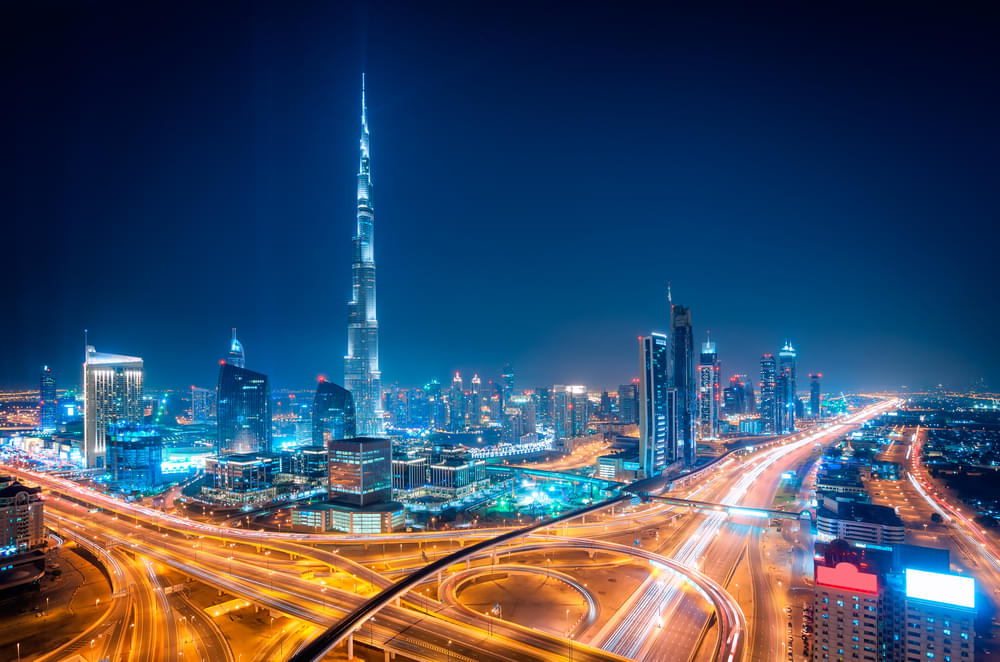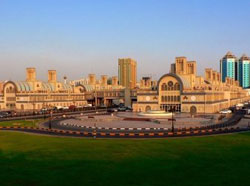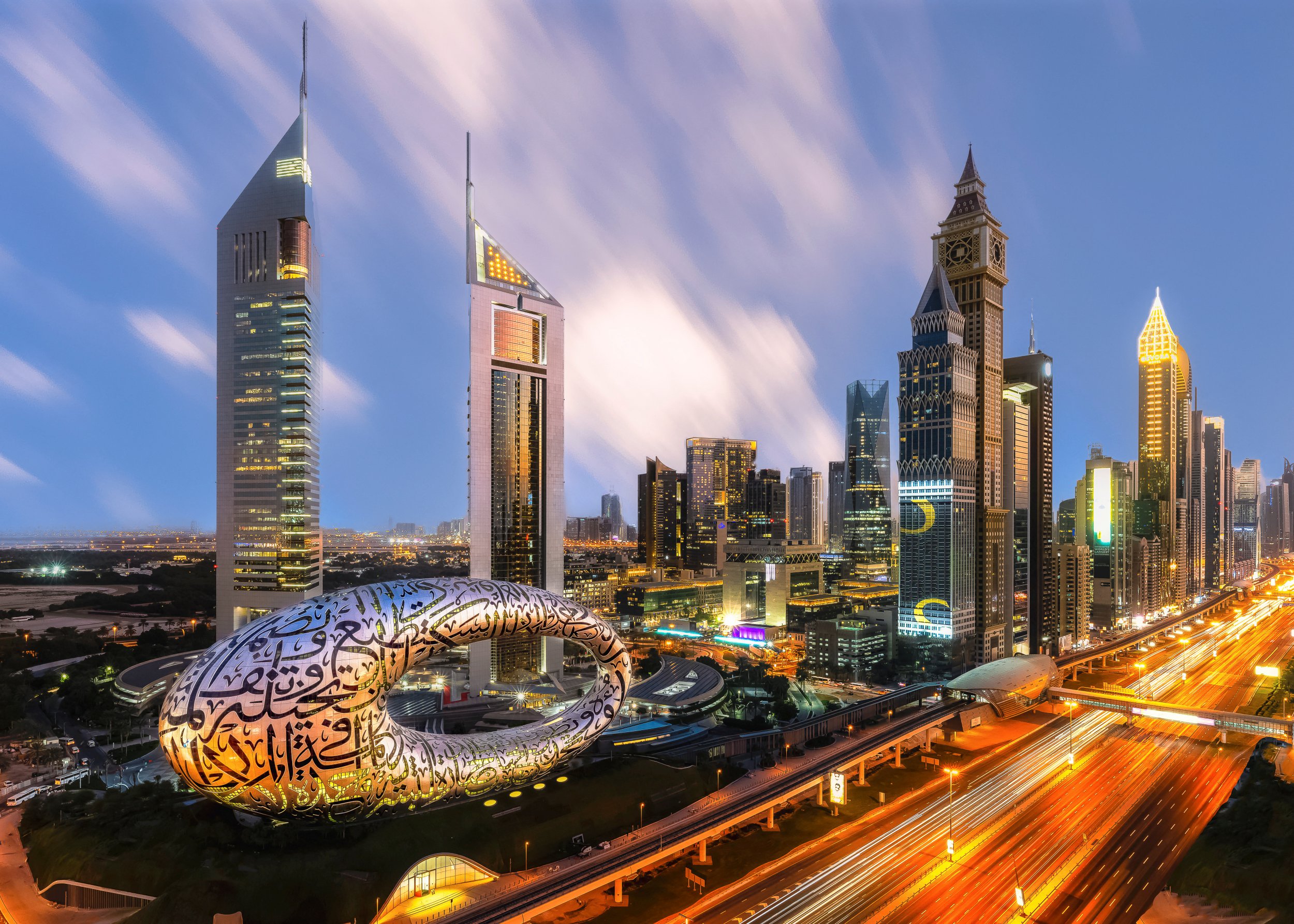The United Arab Emirates (UAE) is a federation of seven emirates – Abu Dhabi, Dubai, Sharjah, Ajman, Umm Al Quwain, Ras Al Khaimah and Fujairah. Each emirate has its own distinct character and attractions for visitors. From ultra-modern cities to ancient oasis towns, sandy beaches to rocky mountains, the UAE offers incredible diversity within its borders. Let’s explore the highlights of each emirate.

Abu Dhabi – The Capital of UAE
Abu Dhabi is the largest and capital emirate of the UAE. It covers over 80% of the country’s total land area. The city of Abu Dhabi is a cosmopolitan metropolis with iconic buildings, luxury hotels, cultural attractions and events. Some key highlights include:
- Sheikh Zayed Grand Mosque – One of the world’s largest mosques featuring 82 domes, over 1,000 columns, 24-carat gold gilded chandeliers and the world’s largest hand-knotted carpet.
- Louvre Abu Dhabi – An architectural masterpiece and home to artworks and artifacts from civilizations around the world. Designed by Jean Nouvel, its huge dome filters light through its perforations creating an enchanting effect.
- Yas Island – This entertainment mecca is home to Ferrari World theme park, Yas Marina Circuit Formula 1 track, Yas Waterworld and indoor theme park, luxury hotels, marina and golf courses.
- Emirates Palace – One of the most luxurious hotels in the world frequented by royalty and celebrities. Even if you’re not staying, visit for a meal or High Tea in gilded opulence.
- Saadiyat Island – A cultural district in development which will house the Guggenheim Abu Dhabi, Zayed National Museum and Louvre Abu Dhabi.
- Corniche – An 8km sweeping waterfront promenade with parks, play areas, cafes and a path popular for walking, running and cycling with views of the city’s glittering skyline.
Abu Dhabi has moved away from reliance on oil and focused on tourism, finance, media, aviation and renewable energy. It offers a vision of a modern Arab capital city rooted in its heritage and environment.
Dubai – The Land of Superlatives
If there’s one word to describe Dubai, it would be “world’s most extravagant.” This emirate is all about superlatives – the biggest, largest, tallest and glitziest. Some stellar attractions include:
- Burj Khalifa – At 828m, it’s the world’s tallest building offering panoramic city views from the observation deck on the 124th floor.
- Dubai Mall – With over 1,200 shops, this is the world’s largest shopping mall. You can shop until you drop, view aquatic life at the giant aquarium or watch the record-setting fountain shows.
- Palm Jumeirah – An artificial archipelago in the shape of a palm tree that’s a triumph of human ingenuity. You can live or stay in its “fronds” lined with luxury villas and resorts.
- Burj Al Arab – Dubai’s iconic “sail-shaped” 7-star hotel stands on an artificial island. While only guests can enter, you can admire its striking architecture from various vantage points.
- Desert Safaris – Dune bashing in 4×4 vehicles and traditional Bedouin camps under starry nights make for magical desert experiences. Dubai has successfully transformed itself into the Middle East’s tourism and business hub. Its zest for pushing boundaries continues with sights like Museum of the Future, Ain Dubai observation wheel, and upcoming Expo 2020 event.
-

Sharjah – The Cultural Capital of the Arab World
Sharjah was named the UNESCO World Book Capital for 2019, underlining its status as the cultural and educational hub of the UAE. Major attractions include:
- Sharjah Museum of Islamic Civilisation – Traces Islamic culture from Andalusia to China through faith, science, discovery and more using artefacts, digital displays and reconstructions.
- Sharjah Art Museum – An impressive collection of Modern and contemporary Gulf, Arab and international art with regular temporary exhibitions.
- Al Noor Island – A unique butterfly-shaped island park with sculpture installations, lush gardens and a literary pavilion surrounded by Khalid Lagoon’s shimmering waters.
- Sharjah Archaeological Museum – An intriguing museum displaying finds from important ancient Gulf sites like Mleiha archaeological centre.
- Souqs of Sharjah – Atmospheric traditional Arab marketplaces to haggle for handicrafts, antiques, gold, spices, textiles, carpets and more.
Though more conservative than Dubai, Sharjah offers heritage and culture in an authentic setting. It’s a wonderful emirate for museums as well as experiencing Islamic and Emirati traditions.

Ajman is the smallest emirate by area, located on the coast of the Persian Gulf surrounded by Sharjah. Some attractions are:
- Ajman Museum – Housed in an 18th-century fort, displays artefacts from Ajman’s history including weapons, musical instruments, costumes and objects from coastal life.
- Ajman Fort – The original 18th-century fort was rebuilt in the 20th century and is now surrounded by traditional-style buildings housing small museums.
- Ajman Corniche – An inviting waterfront promenade for strolling, cycling or relaxing in seaside parks along white sandy beaches with views of high-rises.
- Manama Park – A popular picnic spot located right on the creek with barbecue spots, playing areas for kids and paddle boats for hire.
- Ajman Saray Luxury Collection Resort – Even if not staying over, you can visit this opulent hotel’s beach, pools, spa and dine at one of the restaurants.
Despite being small, Ajman packs in historic forts, natural scenic beauty, amusement parks, resorts, markets and malls into its area. It offers a more laidback local lifestyle compared to glitzy Dubai or Abu Dhabi.
Umm Al Quwain – The Serene Coastal Emirate
North of Sharjah, Umm Al Quwain is the least populous emirate. Its main appeal lies in its tranquil atmosphere, scenic beaches and traditional lifestyle. Top attractions are:
- Dreamland Aqua Park – A huge waterpark with adrenaline-pumping slides set right on the golden shores of the Persian Gulf.
- UAQ National Museum – Located in the historic Umm Al Quwain Fort, it brings alive the emirate’s history through artifacts, weapons, tools and multimedia displays.
- Al-Sinniyah Island – A small offshore island that can be explored on foot at low tide via a 300m sandbar that emerges. It’s teeming with birdlife and makes a peaceful escape.
- Public Beaches – UAQ’s long stretches of sandy beaches are ideal for sunbathing, strolls, picnics, watersports or just relaxing to views of Iran across the sea.
- Camel Racing Track – Attend the early morning practice runs and races held in winter to experience a beloved Emirati tradition. With fewer crowds and traffic than other emirates, UAQ offers an authentic glimpse into traditional Emirati coastal life at a slower pace.
Ras Al Khaimah (RAK) – The Adventure Hub of UAE
The emirate of Ras Al Khaimah highlights the diverse landscapes of the UAE – from sandy beaches to terracotta deserts to the rugged Hajar mountain range. Top sights are:
- Jebel Jais – Part of the Hajar Mountains, Jebel Jais peaks at 1,934m offering thrilling adventures like the world’s longest zipline, hiking trails and epic mountain drives.
- Jazirat Al-Hamra – This fascinating near-abandoned 300-year-old fishing village is one of the UAE’s oldest and well-preserved coastal settlements.
- Iceland Water Park – Located at Al Marjan Island, it’s the largest waterpark in the UAE spanning an area of 150,000 sqm with waterslides, wave pool and kids play areas.
- Wadi Shawka Canyon – An offroad drive through this rugged yet beautiful canyon showcases the UAE’s dramatic landscapes of wadis, peaks and pools.
- Al Qawasim Corniche – Stretching 4km along the coast, this lively promenade has fountains, mosques, cafes, parks, beaches and views of the Hajar mountains.
RAK offers a quieter alternative to Dubai and great outdoor adventures. It’s currently growing its tourism exponentially with new luxury hotels, beaches and attractions.
Fujairah – The Gateway to the East Coast
Fujairah is the only emirate that lies completely on the Gulf of Oman, outside the Persian Gulf. Its key highlights include:
- Fujairah Fort – This imposing fort dating from 1670 stands tall with its distinctive round towers overlooking date palm oases and the Hajar mountains.
- Al Bidya Mosque – Thought to be the oldest mosque in the UAE, it was built in 1446 AD and is simply furnished with palm-trunk pillars, earthen walls and thatched roof.
- Snoopy Island – Seen from the air, this rocky outcrop off the coast resembles Snoopy! The underwater world offers fantastic scuba diving and snorkeling.
- Masafi Village – Set amid the Hajar Mountains, Masafi is renowned for its natural springs. Visit for scenic views, fruit stalls, rug stores and an authentic Friday market.
- Wadi Wurayah National Park – Hike trails through lush green wadis and canyons lined by pools and waterfalls – a hidden desert oasis!
With its proximity to Oman, Fujairah offers a unique blend of culture. Along with exquisite beaches and dramatic wadis, it provides a quiet and laidback ambience.
Future Of The United Arab Emirates
The future of the United Arab Emirates (UAE) is bright, with the country poised to become a global leader in a number of key areas. The UAE government has developed a number of ambitious plans for the future, including the “We the UAE 2031” vision, which aims to double the country’s GDP and make it one of the best countries in the world to live and work in.

One of the key areas of focus for the UAE is economic diversification. The country is heavily reliant on oil and gas exports, but the government is investing heavily in other sectors, such as tourism, renewable energy, and technology. The UAE is also becoming a major hub for innovation and entrepreneurship.
Another key area of focus for the UAE is sustainability. The country is investing heavily in renewable energy and other sustainable technologies. The UAE is also working to reduce its carbon footprint and become a leader in the fight against climate change.
The UAE is also investing heavily in education and human capital development. The government is committed to providing its citizens with the skills and knowledge they need to succeed in the future economy. The UAE is also attracting top talent from around the world to help drive its development forward.
Overall, the future of the UAE is very promising. The country has a strong economy, a young and educated population, and an ambitious government that is committed to making the UAE one of the best countries in the world to live and work in.
Here are some specific examples of what the future of the UAE might look like:
- The UAE will be a global leader in renewable energy, with a significant portion of its energy mix coming from solar, wind, and other renewable sources.
- The UAE will be a major hub for innovation and entrepreneurship, with a thriving startup scene and a number of world-class universities and research institutions.
- The UAE will be a leader in the fight against climate change, with a commitment to reducing its carbon footprint and becoming a net-zero emissions country.
- The UAE will be a diverse and multicultural society, with people from all over the world living and working together in peace and harmony.
- The UAE will be a global leader in education and human capital development, with its citizens having access to the highest quality education and training.
Of course, the future is uncertain, and it is impossible to say for sure exactly what the UAE will look like in 10, 20, or 50 years. However, the country is on a solid track, and it is well-positioned to succeed in the global economy of the future.
Leave a Reply